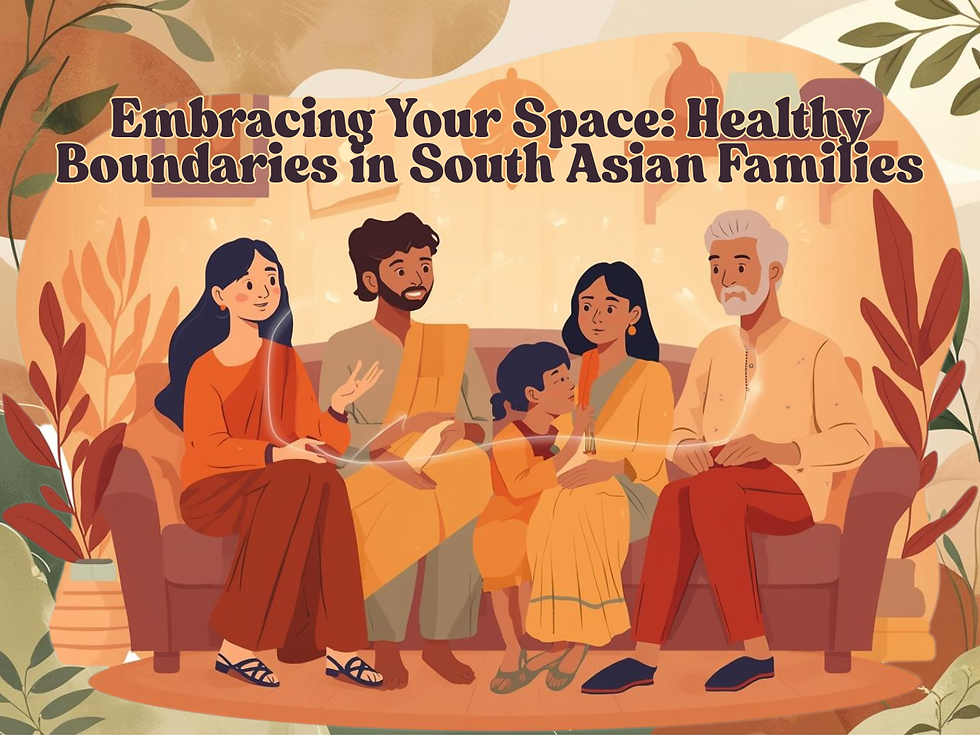The Hidden Emotional Wounds — childhood trauma in South Asian households
- Samaha Sufyan
- Aug 13
- 2 min read
Updated: Oct 17
In many South Asian households, when the topic of childhood and parents comes up, the most common response is something like: “Well, they weren’t abusive. There was no physical or sexual harm. It wasn’t traumatic.”
What we often don’t realise in those moments is that we might be minimising our own experiences and feelings. We’ve been taught to measure trauma only in catastrophic events — the big, obvious explosions. But that’s not the only form it takes.
Small things, repeated consistently over years, can leave scars just as deep as one big, life-altering incident. A constant lack of emotional support, dismissive comments, unrelenting criticism, or conditional love — these aren’t usually called “abuse” in our culture. They’re “discipline.” They’re “tough love.” But in reality it is childhood trauma that is often present commonly amongst South Asian households.
In South Asian communities, respect for elders — especially parents — is not just encouraged, it’s ingrained. It is often placed so high on a pedestal that even when they do wrong, we convince ourselves they didn’t. Cultural norms blur the line between guidance and harm. And because this form of treatment is socially accepted, it doesn’t fit the Western framework of what’s considered abusive.
But harm is harm, no matter the cultural packaging. A bruise to the heart is still a bruise, and wounds you can’t see can last a lifetime.
When these childhood stories surface in the therapy room, many South Asian clients instinctively brush their experiences aside — “It wasn’t that bad. Others had it worse.” As therapists, one of the most powerful interventions is simple validation: to reflect back that those quieter hurts matter too. This kind of gentle acknowledgment can crack open years of silence and minimizing, often becoming the turning point for genuine healing.
Yet, the journey is rarely straightforward. Deep-seated stigma around mental health, combined with the cultural impulse to downplay emotional suffering, creates high hurdles. Many fear that admitting to pain is a sign of weakness, or worse, disrespect. This double bind keeps many South Asians from seeking the help they need, perpetuating cycles of silence and minimization. Challenging this stigma, both inside and outside therapy, is an essential first step toward healing.
It’s time we allowed ourselves to name our experiences for what they are — not to blame, but to heal.



Comments